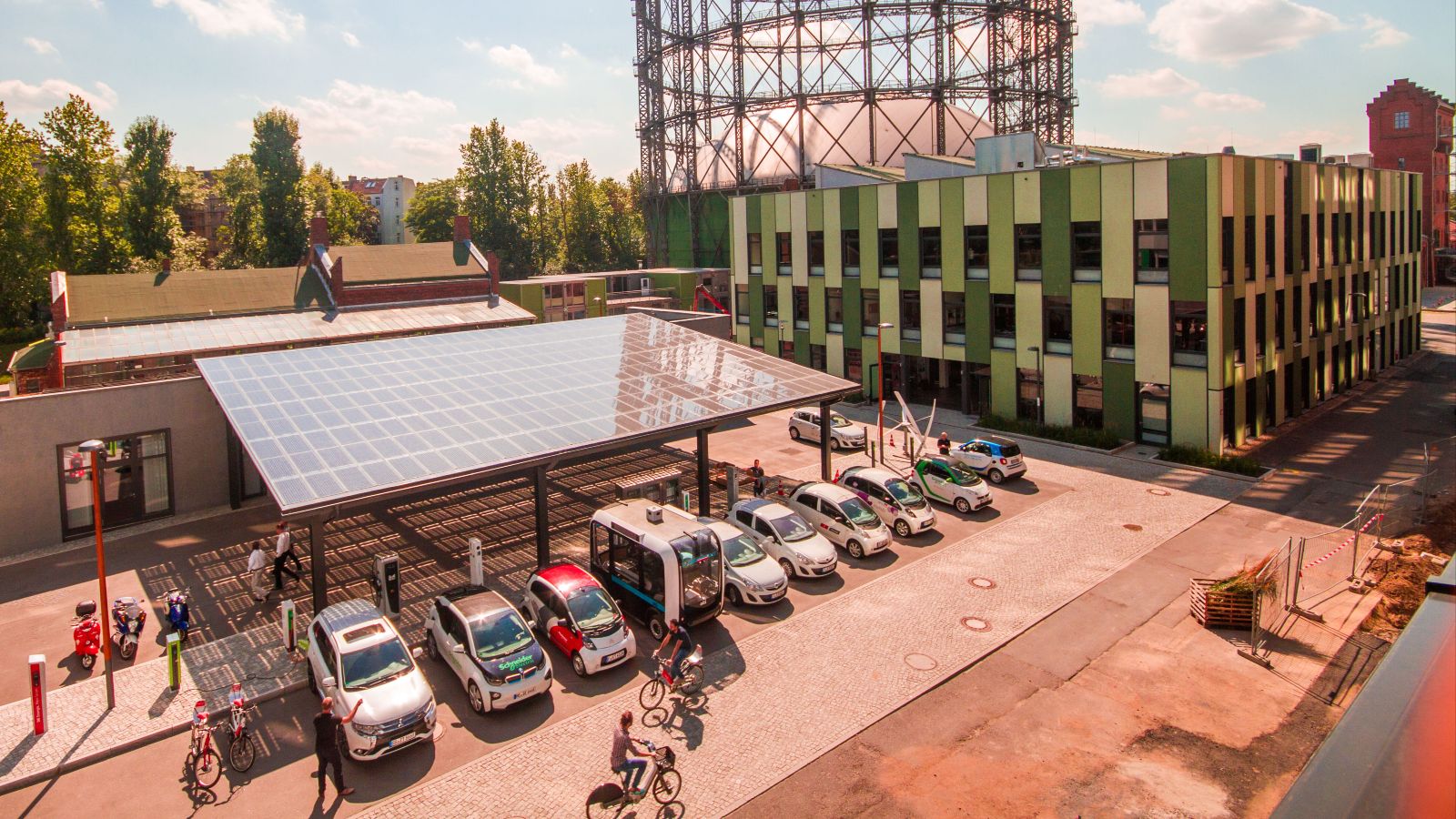Mobility2Grid
The research campus Mobility2Grid
The research campus Mobility2Grid, located in the EUREF area of Berlin-Schöneberg, makes a contribution to implementing the energy and mobility transition. It investigates and achieves innovative solutions in order to make transport, power and heat supply affordable, safe, and completely based on renewable energies.

How is the research campus making a difference?
In addressing climate change, efficient and feasible implementation of the energy and mobility transition is one of the greatest challenges of our time. The aim of the research campus Mobility2Grid is the development of connected systems for the climate-neutral city. The research campus explores strategic plans for low-emission traffic systems and for cities that are low in pollution and noise but also safe. The knowledge gained from application examples is used to develop models for the climate-neutral city of the future and thus enable the scalability of the overall system. Therefore, the guiding principle of the current, second funding phase is “Mobility2Grid – efficient and integrated systems for the climate-neutral city.”
What is the main focus of the research campus?
The partners of the research campus carry out their activities in six different research cores, exploring what the climate-neutral city of the future may look like: grid integration, automated charging and driving, electrification of fleets and depots, neomobility, transfer areas, and participation and acceptance. In this context, the research campus Mobility2Grid develops scenarios for the future use of different forms of mobility and power supply which are aimed at supporting strategic planning decisions for areas, neighbourhoods and entire cities. In the current, second funding phase, the research campus Mobility2Grid is focusing on application of the results of the first funding phase to a wide variety of neighbourhoods, the so-called "transfer areas". The greatest challenges to be met are to cater to both the different conditions in each transfer area and to the requirements of energy efficiency.
In addition, the research campus focuses on societal acceptance of new climate-neutral technologies. This is because, in addition to the production of climate-neutral vehicles, the public's acceptance also plays an essential role in making the energy and mobility transition a success. In future, the research campus Mobility2Grid will contribute to the successful transformation of the energy and mobility system while also providing enabling conditions for the use of electric road vehicles in both commercial and private contexts.

